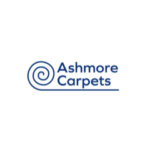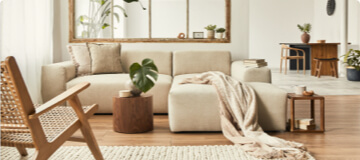When it comes to the best flooring for a kitchen, there are a number of factors to consider – how easy it is to maintain, whether it suits your style and colour requirements, and how much it costs to name a few. Your kitchen flooring should also be super-durable and able to withstand a large amount of foot traffic — after all, it’s one of the most used rooms in a home! Kitchens are also exposed to frequent dirt, moisture, and spills, so they need to be as water-resistant as possible. So what is the best flooring for a kitchen?
Tiles
Being waterproof, tiles have always been the go-to option for “wet” areas like kitchens. Once they’re installed, grouted, and sealed correctly, they can last a lifetime. They’re also durable, slip and scratch-resistant, low maintenance, and a great choice for those with allergies, pets, and a penchant for high heels.
Porcelain, ceramic, and natural stone tiles like marble and terrazzo are available, and in palettes ranging from earthy neutral tones to bold, bright colours. Other tiling trends include those with 3D effects, retro and vintage designs, and handmade tiles that offer a unique and characteristic aesthetic.
Laminate
Laminate flooring is durable, moisture, stain, and scratch-resistant, and if installed with an underlay, comfortable to walk on due to its inherent warmth and thickness. As a “floating” floor option, it can be installed over the top of most types of existing flooring.
As with tiles, waterproof laminate is also a popular choice for wet areas, and its rigid core adds strength and stability. Installation is flexible too — most tiles can be clicked together and permanently floated or glued down, allowing for installation over uneven subfloors.
Laminate floors are also an inexpensive way of achieving the look of a traditional hardwood floor. Lighter finishes offer a clean, contemporary look that enhances a seamless aesthetic and an enhanced sense of space. Colours include greys, whites, and light timbers in a variety of patterns like herringbone and chevron. Distressed, hand-scraped, rustic, and “reclaimed” finishes also offer a unique and realistic edge.
Vinyl
Another popular flooring choice for kitchens, vinyl is very similar to laminate but there are some distinct differences. Vinyl is slightly more durable and is typically made from 100% polymer, which makes it completely waterproof —so it’s ideal for wet rooms.
It is low maintenance and one of the easiest flooring types to clean, only needing a slightly wet mop and the use of a mild cleaning product on stubborn or sticky stains. Vinyl is also a quieter option, especially if you have active children and/or pets, and it can be installed on any flat subfloor, including laminate, tile, cement, and granite.
Bamboo
Bamboo is enjoying a boost in popularity due to its timbered style, contemporary aesthetics, and warm colouring — it has attractive organic hues and beautiful grain. It is also a sustainable choice and an environmentally friendly alternative to synthetic kitchen flooring options, so the perfect choice for both eco and style-conscious households.
It is strong and durable and can withstand the everyday use and abuse that kitchen floors are often subjected to. It is easy to maintain and resists moisture so will not warp or swell like traditional hardwoods. A simple mop, sweep, or vacuum is more than enough to sustain this type of flooring. It can be laid over a variety of sub-floors, will insulate your home throughout winter and summer, and due to its density, provides a quiet floor to walk on as opposed to other floor types.
Concrete
Offering a sleek, seamless look that can be tailored to both traditional and modern styles, concrete floors are incredibly durable and can be sealed to be completely waterproof. They are ideal for households where children, pets, and allergies roam because, unlike wood or tile grout, they won’t capture dust mites, moisture, or pet fur. When adequately sealed, they resist fading, scratches, and even chemical spills. Cleaning involves a regular sweep with a broom or dust mop to keep the surface free of debris and a wash with a damp mop when needed.
Concrete floors can be highly energy efficient in certain applications, as they transfer heat well with radiant floor systems. In passive solar homes, they will absorb sunlight during the day and release heat back into your home after dark. Unique finishes can also be achieved — they can be painted, stamped, scored, stencilled, patterned, and stained to look like marble, stone, timber, and even tiles — with a variety of distinctive patterns and colours.
References
- 2021, Best Flooring for Kitchens in 2021, Good Guy Flooring
- 2021, Kitchen Flooring Trends, Carpet One
- 2021, Why Choose Tiles, Beaumont Tiles
- 2020, Tile Trends Expected To Be Big in 2021, Perini
- 2021, Vinyl vs Laminate – Which Flooring Will Suit My Space, Bennetts Carpets
- 2020, Bamboo Flooring Benefits, Tile Wizards
- Ann Wilson, 2018, Stained Concrete Flooring Basics, Better Homes and Gardens





